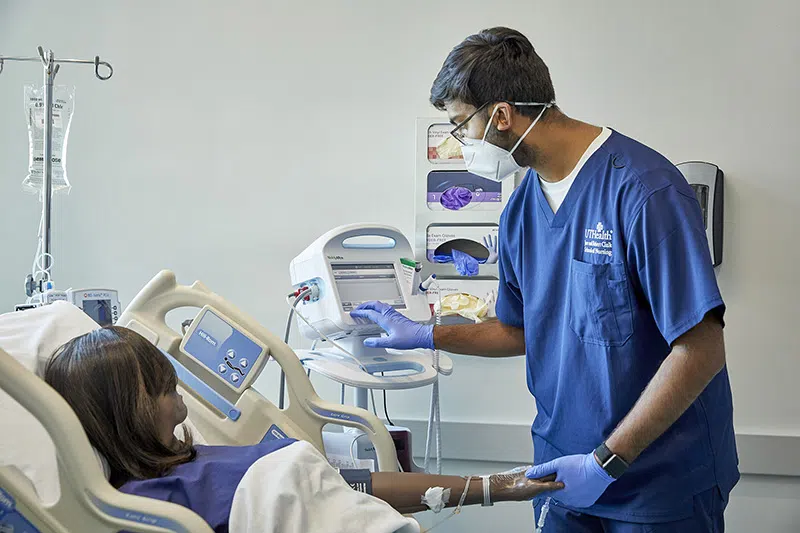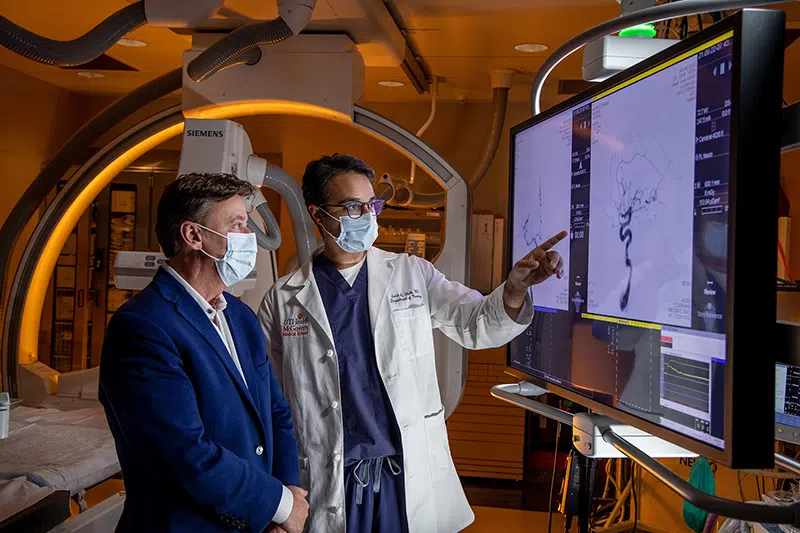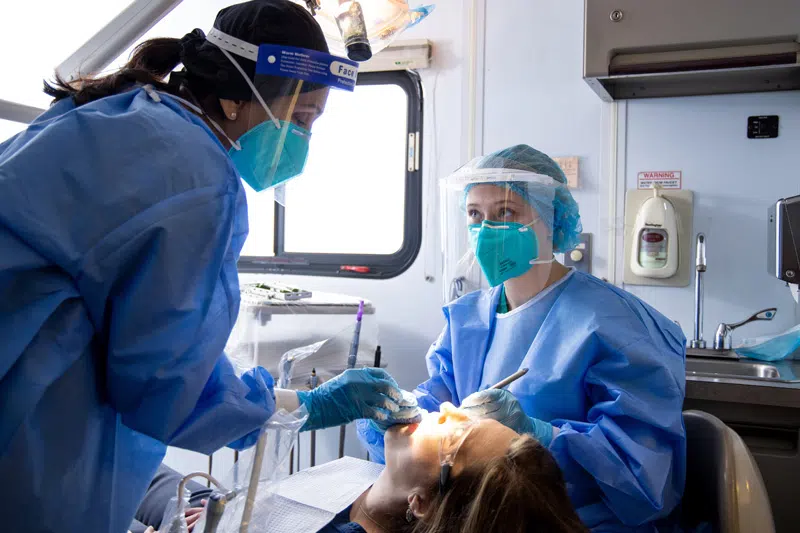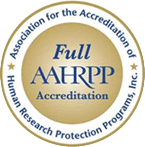POLICY
UTHealth requires that informed consent must be obtained from all human subjects prior to their participation in any research unless the process, or any part thereof, has been waived by the the IRB.
Key Terms
Legally Authorized Representative - Under DHHS regulations, the term Legally Authorized Representative means an individual or judicial or other body authorized under applicable law to consent on behalf of a prospective subject to the subject's participation in the procedure(s) involved in the research. UTHealth will follow the Texas Health & Safety Code - Chapter 313. Consent to Medical Treatment Act for research consent matters unless clearly inapplicable because there is no applicable Texas law specific to research consent as described in Item 5 of policy and procedure on Research Involving Cognitively Impaired Persons.
PROCEDURE
General Considerations - Before involving a human subject in research covered by this policy, an investigator shall obtain the legally effective informed consent of the subject or the subject's legally authorized representative. An investigator must seek informed consent only under circumstances that provide the prospective subject sufficient opportunity to discuss and consider whether or not to participate and that minimize the possibility of coercion or undue influence.
Informed consent must be conducted in a language understandable to the subject. The prospective subject must be provided with the information that a reasonable person would want to have in order to make an informed decision about whether to participate, and an opportunity to discuss that information. The informed consent may not include any exculpatory language through which the subject is made to waive or appear to waive any of the subject's legal rights, or releases or appears to release the investigator, the sponsor, the institution, or its agents from liability for negligence.
Informed Consent Document: Informed consent must begin with a concise and focused presentation of the key information that is most likely to assist a prospective subject or legally authorized representative in understanding the reasons why one might or might not want to participate in the research. This part of the informed consent must be organized and presented in a way that facilitates comprehension. Informed consent as a whole must present information in sufficient detail relating to the research, and must be organized and presented in a way that does not merely provide lists of isolated facts, but rather facilitates the prospective subject's or legally authorized representative's understanding of the reasons why one might or might not want to participate.
The consent document should be in the second person style so the consent document conveys a dialogue with information being provided and that there is a choice to be made by the subject rather than presumption of the subject’s consent with the use of the first person style. Consent documents should be in 6th to 8th grade reading level. Technical and scientific terms should be adequately explained using common or lay language.
Basic Elements of Informed Consent: In seeking informed consent the following information shall be provided to each subject:
- A statement that the study involves research, an explanation of the purposes of the research and the expected duration of the subject's participation, a description of the procedures to be followed, and identification of any procedures that are experimental;
- A description of any reasonably foreseeable risks or discomforts to the subject;
- A description of any benefits to the subject or to others that may reasonably be expected from the research;
- A disclosure of appropriate alternative procedures or courses of treatment, if any, that might be advantageous to the subject;
- A statement describing the extent, if any, to which confidentiality of records identifying the subject will be maintained;
- For research involving more than minimal risk, an explanation as to whether any compensation and an explanation as to whether any medical treatments are available if injury occurs and, if so, what they consist of, or where further information may be obtained;
- An explanation of whom to contact for answers to pertinent questions about the research and research subjects' rights, and whom to contact in the event of a research-related injury to the subject;
- A statement that participation is voluntary, refusal to participate will involve no penalty or loss of benefits to which the subject is otherwise entitled, and the subject may discontinue participation at any time without penalty or loss of benefits to which the subject is otherwise entitled; and
- One of the following statements about any research that involves the collection of identifiable private information or identifiable biospecimens:
- A statement that identifiers might be removed from the identifiable private information or identifiable biospecimens and that, after such removal, the information or biospecimens could be used for future research studies or distributed to another investigator for future research studies without additional informed consent from the subject or the legally authorized representative, if this might be a possibility; or
- A statement that the subject's information or biospecimens collected as part of the research, even if identifiers are removed, will not be used or distributed for future research studies.
Additional elements of informed consent: When appropriate the following information shall be provided to each subject or the legally authorized representative:
- A statement that the particular treatment or procedure may involve risks to the subject (or to the embryo or fetus, if the subject is or may become pregnant) that are currently unforeseeable;
- Anticipated circumstances under which the subject's participation may be terminated by the investigator without regard to the subject's or the legally authorized representative's consent;
- Any additional costs to the subject that may result from participation in the research;
- The consequences of a subject's decision to withdraw from the research and procedures for orderly termination of participation by the subject;
- A statement that significant new findings developed during the course of the research that may relate to the subject's willingness to continue participation will be provided to the subject;
- The approximate number of subjects involved in the study;
- A statement that the subject's biospecimens (even if identifiers are removed) may be used for commercial profit and whether the subject will or will not share in this commercial profit;
- A statement regarding whether clinically relevant research results, including individual research results, will be disclosed to subjects, and if so, under what conditions; and
- For research involving biospecimens, whether the research will (if known) or might include whole genome sequencing (e.,sequencing of a human germline or somatic specimen with the intent to generate the genome or exome sequence of that specimen).
- For research involving test articles regulated by FDA, consent document must include a statement that the purpose of the study includes evaluation of both the safety and effectiveness of the test article; and a statement that the FDA has access to the subject’s medical records.
- For research under FDA oversight, consent document must include a statement regarding clinical trial registration.
Elements of broad consent: Broad consent for the storage, maintenance, and secondary research use of identifiable private information or identifiable biospecimens (collected for either research studies other than the proposed research or non-research purposes) is permitted as an alternative to the above informed consent requirements. If the subject is asked to provide broad consent, the following information must be provided to each subject:
- The study is limited to the storage, maintenance, and secondary research use of identifiable private information and identifiable biospecimens (collected for either research studies other than the proposed research, or non research purposes).
- The study has undergone limited IRB review and meets requirements for exempt Category 7 or Category 8.
- Researchers must provide all required disclosures for broad consent to each participant or participant’s legally authorized representative:
- A statement describing the extent, if any, to which confidentiality of records identifying the participant will be maintained. (May be omitted if confidentiality will not be maintained.)
- A statement that participation is voluntary.
- A statement that refusal to participate will involve no penalty or loss of benefits to which the participant is otherwise entitled.
- A statement that the participant may discontinue participation at any time without penalty or loss of benefits to which the participant is otherwise entitled.
- A statement that the participant’s biospecimens (even if identifiers are removed) may be used for commercial profit and whether the participant will or will not share in this commercial profit.
- Information about future use of private identifiable information or identifiable biospecimens:
- A statement that identifiers might be removed from the identifiable private information or identifiable biospecimens and that, after such removal, the information or biospecimens could be used for future research studies or distributed to another researcher for future research studies without additional informed consent from the participant or legally authorized representative, if this might be possible; or
- A statement that the participant’s information or specimens collected as part of the research, even if identifiers are removed, will not be used or distributed for future research studies.
- A general description of the types of research that may be conducted with the identifiable private information or identifiable biospecimens, such that a reasonable person would expect the broad consent would permit the types of research conducted.
- A description of the identifiable private information or identifiable biospecimens that might be used in the research.
- Whether sharing of identifiable private information or identifiable biospecimens might occur.
- Unless the participant or legally authorized representative will be provided details about the specific research studies, a statement that they will not be informed of the details of any specific research studies that might be conducted using the participant’s identifiable private information or identifiable biospecimens, including the purposes of the research, and that they might not have chosen to consent to some of those specific research studies.
- Unless it is known that clinically relevant research results, including individual research results, will be disclosed to the participant in all circumstances, a statement that such results might not be disclosed to the participant.
- For research involving biospecimens, a statement specifying whether the research will (if known) or might include whole genome sequencing.
- An explanation of whom to contact for answers to pertinent questions about the research participant’s rights.
- An explanation of whom to contact for answers to questions about storage and use of the participant’s identifiable information or biospecimens.
- An explanation of whom to contact in the event of a research-related injury to the participant. (May not be omitted just because the research involves no more than minimal risk.)
- Contact information for the research team for questions, concerns, or complaints.
- Contact information for someone independent of the research team for problems, concerns, questions, information, or input.
- If there is a change made for research purposes in the way the identifiable private information or identifiable biospecimens are stored or maintained, there are adequate provisions to protect the privacy of participants and to maintain the confidentiality of data.
Documentation of Informed Consent Process - Informed consent shall be documented by the use of a written consent form approved by CPHS and personally signed and dated by the subject or the subjects’ legally authorized representative. A copy of the signed consent document shall be given to the subject and the original placed in the study file unless the process, or any part thereof, has been waived by the CPHS.
Waiver for Screening, Recruiting or Determining Eligibility – An IRB may approve a recruitment plan in which an investigator will obtain information or biospecimens for the purpose of screening, recruiting, or determining the eligibility of prospective subjects without the informed consent of the prospective subject or the subject's legally authorized representative, if either of the following conditions are met:
- The investigator will obtain information through oral or written communication with the prospective subject or legally authorized representative, or
- The investigator will obtain identifiable private information or identifiable biospecimens by accessing records or stored identifiable biospecimens.
Waiver or Alteration of Informed Consent - CPHS may approve a consent procedure which does not include, or which alters, some or all of the elements of informed consent set forth in this section, or waive the requirements to obtain informed consent provided that CPHS finds and documents that:
- The research involves no more than minimal risk to the subjects;
- The research could not practicably be carried out without the requested waiver or alteration;
- If the research involves using identifiable private information or identifiable biospecimens, the research could not practicably be carried out without using such information or biospecimens in an identifiable format;
- The waiver or alteration will not adversely affect the rights and welfare of the subjects; and
- Whenever appropriate, the subjects or legally authorized representatives will be provided with additional pertinent information after participation.
Waiver of Documentation of Informed Consent - CPHS may waive the requirement for the investigator to obtain a signature on the consent document for some or all of the participants if it finds either of the following is met:
- That all of the following are true:
- The only record linking the participant and the research would be the consent document;
- The principal risk would be potential harm resulting from a breach of confidentiality.;
- Each participant will be asked whether the participant wants documentation linking the participant with the research, and the participant’s wishes will govern; and
- The research is not regulated by the US FDA
- That all of the following are true :
- The research presents no more than minimal risk of harm to participants; and
- The research involves no procedures for which written consent is normally required outside the research context.
- Waiver of Consent Process – Public Demonstration Project
- The research is conducted by or subject to the approval of state or local government officials.
- The research or demonstration protocol is designed to study, evaluate, or otherwise examine:
- Public benefit or service programs;
- Procedures for obtaining benefits or services under those programs;
- Possible changes in or alternatives to those programs or procedures; or
- Possible changes in methods or levels of payment for benefits or services under those programs.
- The research cannot practicably be carried out without the waiver or alteration.
- The research is not regulated by the US FDA.
- Waiver of Documentation of the Consent Process: Distinct Cultural Groups
- The research presents no more than minimal risk of harm to participants;
- The participants or legally authorized representatives are members of a distinct cultural group or community in which signing consent documents is not the norm;
- There is an appropriate alternative mechanism for documenting that informed consent was obtained;
- The oral or written information provided to participants includes all required and appropriate additional elements of consent disclosure;
- The IRB will determine whether the researcher should provide participants with a written statement regarding the research; and
- The research is not regulated by the US FDA.
In cases where the documentation requirement for informed consent is waived, CPHS may require the investigator to provide participants with a letter of information regarding the research or utilize a verbal script. The letter of information or the verbal script must be submitted to the CPHS for review and approval.
CPHS Review of Informed Consent - CPHS will ensure that the information in the protocol matches the information in the informed consent document regarding the purpose, risks, and benefits of the research. When the research proposal is approved, CPHS stamps the approval date on all approved informed consent documents and stipulates that copies of these dated documents must be used in obtaining consent.
Monitoring of Consent Process - CPHS may require monitoring of the informed consent process under certain circumstances, such as enrollment of vulnerable subjects or subjects in stressful situations, such as labor and delivery or the intensive care unit. In the event such monitoring is required, the research intermediary will be involved. The research intermediary serves as an additional advocate dedicated to ensuring that subjects’ rights are protected during their participation in research. The intermediary evaluates the subject for understanding of the research prior to the onset of research procedures. The research intermediary notes in the patient/subject file conclusions regarding the comprehension of the subject and reports to the investigator whether research procedures may begin. The Intermediary also reports to CPHS in the event of a difference of opinion with the investigator.
Posting of Consent Document: For each clinical trial conducted or supported by a Federal department or agency, one IRB-approved informed consent form used to enroll subjects must be posted by the awardee or the Federal department or agency component conducting the trial on a publicly available Federal website that will be established as a repository for such informed consent forms. If the Federal department or agency supporting or conducting the clinical trial determines that certain information should not be made publicly available on a Federal Web site (e.g. confidential commercial information), such Federal department or agency may permit or require redactions to the information posted. The informed consent form must be posted on the Federal website after the clinical trial is closed to recruitment, and no later than 60 days after the last study visit by any subject, as required by the protocol.
APPLICABLE REGULATIONS
- 45 CFR 46 Protection of Human Subjects
- 21 CFR 50 Protection of Human Subjects
- 21 CFR 56 Institutional Review Board
- FDA Informed Consent Information Sheet - Draft
- OHRP FAQ – Informed Consent
REFERENCE TO OTHER POLICIES
- Initial Review
ATTACHMENTS
- Informed Consent Template
If you find errors in this document, contact [email protected]
|
Document Number:
|
101-C07
|
|
Document Name:
|
Informed Consent
|
|
Reviewed by:
|
Executive Director, Research Compliance
|
|
Effective:
|
1 Aug 2008
|
|
Revision History:
|
1 Jan 2009, 1 Aug 2011, 1 Jun 2016, 19 Jan 2018, 1 June 2021, 1 Sept 2021, 15 February 2023, 17 July 2024
|
CPHS HELPLINE 713-500-7943
iRIS HELPLINE 713-500-7960
UTHealth’s Compliance Hotline (1-888-472-9868)
IRB OFFICE HOURS Thursdays from 1 to 4pm, via the Teams Room at this link
How can we improve this site?


 Featured Donor
Featured Donor











